Thomas Lane takes a look at the latest high-tech site accessories, and discovers that 3D television is already working in the labs ...
Laptops that can take a beating
Several leading manufacturers have launched rugged laptops recently. Probably the most significant entry into the market is a semi-rugged notebook, the Latitude ATG D620, by computer giant Dell.
Semi-rugged may not be quite as bombproof as a fully rugged notebook, but it is adequate for construction professionals out on site, and doesnŌĆÖt cost a fortune or weigh a tonne. Prices start at ┬Ż995, excluding VAT and delivery, which is ┬Ż293 more than the standard, non-rugged D620 on which the ATG is based. It weighs 2.8kg with its battery, which is hefty, but not impossible to lug around.
Buyers can specify what speed of processor, capacity of hard drive and type of operating system it has, which could bump the price up. However all versions come with a 14.1ŌĆØ screen, designed to be visible in bright conditions, a shock-mounted hard drive, a spill resistant keyboard and wi-fi and Bluetooth connectivity.
Buyers seeking something more petite should check out PanasonicŌĆÖs 1.24kg Toughbook CF-W5. It is 268mm wide, 210mm deep and 46mm thick, compared with DellŌĆÖs 337├Ś 238 ├Ś 43mm. However it starts at ┬Ż1,429, excluding VAT, and has a 12.1ŌĆØ screen.
For those who need something really tough General Dynamics has launched its XR-1 fully rugged notebook. It is completely watertight, so can be used in the rain and repeatedly dropped. However, although it has the same size screen as the Panasonic it weighs more than twice as much at 3.1kg, and costs a hefty ┬Ż2,168 excluding VAT.
Cut out background noise
The EVOQ DSP Bluetooth headset, suitable for mobiles, music players and for making and receiving Voice over Internet Protocol (VoIP) calls, has been launched by Qstik. It features what the company describes as military-grade noise cancellation technology. This is bi-directional, which means it cancels out background noise for both the wearer, and the person on the other end of the phone line. The company claim it can cancel out the noise of pneumatic drilling, so it could be handy out on a construction site as long as the user is in a place where they donŌĆÖt need to hear background noise for safety reasons. The device fits over the ear and there is a supplied earbud to give stereo sound. The headset costs ┬Ż59.99 and the USB dongle which connects to a PC for VoIP or music, is ┬Ż17.99.
Good news for BlackBerry addicts
Research in Motion has launched the new BlackBerry 8800, available on Vodafone. Like its predecessors, the 8800 is a phone and email device complete with QWERTY keyboard and trackball. The BlackBerryŌĆÖs main selling point, the ŌĆ£pushŌĆØ email, which is always on, remains, but the 8800 is slimmed down to just 14mm thick. The main addition is the Global Positioning System (GPS), which means it can be used as a location finding tool. It comes loaded with maps and directions, which link to the address book so you can pull up a map using an address or email maps to other people.
Another new feature is a music and video player. The phone part of the device is quad-band and Bluetooth-enabled, and includes noise cancelling technology for greater call clarity in noisy environments. With Vodafone, the price ranges from free up to ┬Ż161, depending on the type of contract.
Dave to the rescue
If your fancy new multi-media phone gets stolen, often the most devastating thing is losing all your data. Well, a knight in shining armour called Dave could be your saviour. Dave is a miniaturised storage device the size of a credit card, made by hard drive manufacturer Seagate. The name stands for Digital Audio Video Experience and it is a hard drive capable of storing up to 20 Gb of data. This means it doubles up as a place to keep all those memory-hungry files such as photographs and drawings, without having to lug a laptop around. It communicates with a mobile phone, a PDA or other electronic device from up to 9m away via Bluetooth, and has to be paired with the device to stop other people hacking into the link. Orange is planning to offer the device to its corporate customers later this year, so they can use its high-speed service to download data to the device, then access it using a phone. This means sensitive data isnŌĆÖt lost if a phone is lost or stolen. The price is yet to be confirmed.
Wireless in harsh conditions
Rugged technology solutions provider Symbol Technologies, which was recently bought by Motorola has brought out a wireless access point for harsh environments. The AP-5181 Access Point extends wireless networks in demanding environments such as construction sites.
The company says it can withstand wind, rain, lightning, extreme temperatures and power surges. An optional heavy weather mounting kit is available, which the company says enables the device to withstand the impact of wind-blown debris at 130 miles an hour. The device is ŌĆ£mesh capableŌĆ£, meaning it automatically creates outdoor wireless networks that can be managed remotely.
Voice over Internet Protocol: is it good for business?
It is hardly surprising that technology which allows you to call anyone in the world for free should prove popular. Voice over Internet Protocol (VoIP) does just that by sending voice signals over the internet, allowing users to talk to others using their PCs for nothing. Calling a conventional phone costs the same as a local call.
And services are becoming more advanced ŌĆō VoIP phones that plug straight into the phone socket without a PC are now available, as are wireless phones. You can also receive calls on mobiles, if youŌĆÖre in a wi-fi hotspot.
Businesses, including construction companies, are catching on to the benefits. Architect Lewis & Hickey has signed up with service provider Skype, which has 170 million users worldwide. Lewis & Hickey has installed Skype into all its UK and international offices after working on a job in India. It says it expects to cut its ┬Ż35,000 phone bill in half over four years. ŌĆ£There was a really important briefing on this project and the client in India really needed to be in on that,ŌĆØ explains Ben Mareschal, the companyŌĆÖs director of business development. ŌĆ£We had 17 people online at once. It was incredible.ŌĆØ
VoIP has also meant the architect responsible for the project has only been out to India three times in the past five months. ŌĆ£If we didnŌĆÖt have Skype he would have had to go out there 10 times,ŌĆØ says Mareschal.
Users can communicate one to one with a video conferencing facility ŌĆō all they need is a webcam. Admittedly the picture is a bit fuzzy and jerky, but you can see the other person sufficiently clearly ŌĆō and itŌĆÖs free. ŌĆ£Video makes it much more personable. It breaks down barriers,ŌĆØ says Mareschal.
Lewis & Hickey allocates a dedicated Skype number to each project so when people call they go straight through to the right person. Calls can be accessed from any PC or on mobile handsets. To enjoy free calls, clients have to sign up to Skype, which costs nothing. Mareschal says about 20 clients have done so. Unsurprisingly, the firmŌĆÖs cost consultant is also a convert.
Palm reading and 3D adverts: the future according to BT
Telecoms giant BT takes research and development seriously. It has 3,000 boffins beavering away in a dedicated research facility called Adastral Park on the outskirts of Ipswich. These scientists are working on what could be the next big technological breakthrough. They are not just restricted to telecoms but cover virtually anything to do with technology. ŌĆ£We have reached the stage where you can do most things with technology. ItŌĆÖs really about whether or not there is a business case,ŌĆØ says Mark Whittle, who manages BTŌĆÖs future home demonstration.
One thing there is certainly a business case for is security, so it is hardly surprising that a substantial chunk of the facility is dedicated to technology that reduces risk. Various biometric systems are on display including facial and voice recognition, but palm vein readers could be the real answer to construction site security problems. Made by Fijitsu, these work by reading the heat given off by the veins in the hand. Significantly, they work with dirty hands or through gloves as the user doesnŌĆÖt have to physically touch the reader. According to BT it is highly accurate, with less that a one in billion chance of wrongly identifying an individual ŌĆō that is much more reliable than facial and voice recognition systems.
Another promising development is the optical fibre vibration sensor, which allows you to listen to sounds transmitted along fibre optic cables many miles long. There are many applications for this. For example, it could detect the sound of a manhole being removed in a street, or alert the security centre that a bomb is being planted. It could also be used as an early warning system: fibre optic cables could be attached to conventional cables or pipes and alert security when they are under strain and about to break.
A newer, more exciting technology than videoconferencing is autostereoscopic TV. In plain English, this means 3D television that is viewed on what looks just like a conventional flatscreen telly. Bizarrely, the image appears to hover as a solid in front of the screen. The experience feels very convincing as you donŌĆÖt need special glasses and you can even view the object from the side. The down-side is that eight cameras are needed to film the image. BT says it is working on cutting this down to two.
Alas, the first sight most people will have of autostereoscopic TV will be in places like supermarkets, where it will be used for advertising.
Software news
The whole project online
Seven years ago online project collaboration seemed like radical stuff but has since become mainstream. E-business solutions provider Asite is about to shake up the world of online collaboration again with the launch of an online single building model.
Users will be able to collaborate on the design of the building, tender it, order components, then collaborate on its construction all in one environment. This should eliminate design errors and clashes ŌĆō an audit trail tracks changes, and a tool ensures they are authorised.
But the really clever bit is the way the model interfaces with other Asite tools, and external usersŌĆÖ software. For example, users can select the doors for a project, then go to the Asite procurement tool, view prices and purchase them.
Intelligent objects that meet the internationally recognised IFC standard allow a range of software tools to use this data. For example, designers can work with their in-house software but can update the building information model (BIM) because of the IFC standard.
Users can also check the BIM using AsiteŌĆÖs viewer. The design can then be tendered on Asite ŌĆō all the components being identified makes this much easier. Once it reaches the construction stage, components can be easily ordered and the team can continue to collaborate using the tool.
DoesnŌĆÖt this look a bit radical for an industry that was sceptical about project collaboration back in 2000? ŌĆ£WeŌĆÖre realistic about it. WeŌĆÖre not going to change the world overnight,ŌĆØ says Tony Ryan, AsiteŌĆÖs chief executive officer. ŌĆ£There is a gradual change from 2D to 3D, then to a BIM. ItŌĆÖs will be a gradual adoption.ŌĆØ
Asite will launch its BIM in April.ŌĆØWe would like to have our first projects using this by the third or fourth quarter of this year,ŌĆØ says Ryan.
Collaborating on collaboration
A big complaint about collaboration tools is that everybody is familiar with a different system, which means companies have to spend time and money training their staff when they start a new project. Business Collaborator, a system provider, has announced that it is working on a European-wide project to develop an open standard for such tools. Called Ecospace, the *12m (┬Ż8.1m) project aims to allow users of different collaboration tools to integrate with each other so each can work with the tools it is familiar with.
ŌĆ£There is a huge debate over which collaborative tool to use on a project, and people fight to use their own systems,ŌĆØ says Sanjeev Shah, Business CollaboratorŌĆÖs managing director. ŌĆ£If you win the debate, you donŌĆÖt have the training costs and you control all the data, which is particularly useful if there is a dispute.ŌĆØ
To complicate matters further, different systems can be used during different phases of the project.
Although Business Collaborator is the only construction-related provider involved in the project, Shah says it is keen to share the outcomes with others.
Design and analysis in one
CAD software giant Autodesk has teamed up with building analysis software provider Integrated Environmental Solutions to offer an integrated building analysis and design tool. Autodesk wants to add building performance analysis tools to its Revit design software.
Currently 3D design and building analysis has to be carried out separately. The combined package would be able to carry out a range of analytical functions including thermal analysis, load calculations, and daylighting assessment.
Postscript
Go to for the latest building products





















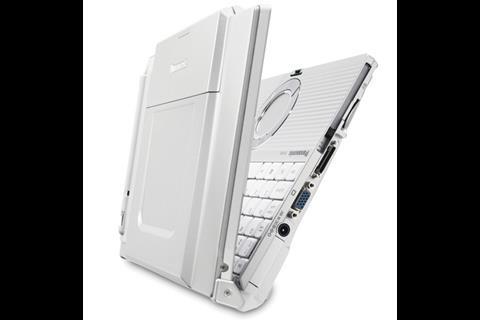
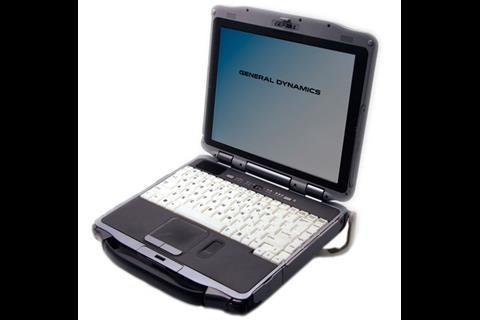
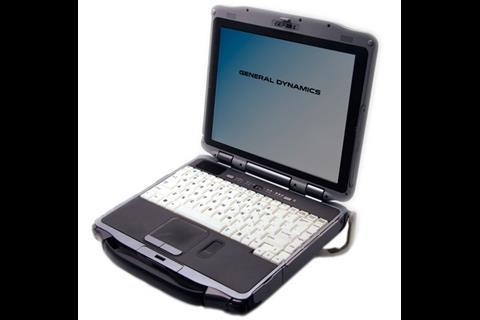
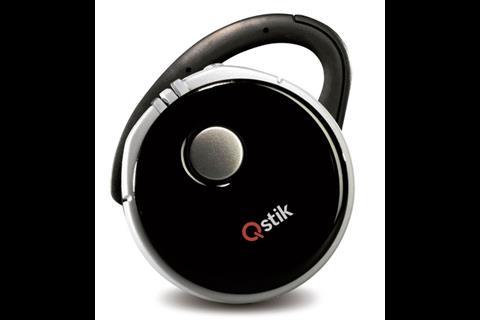
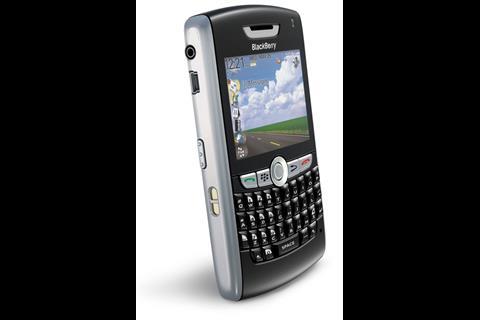




No comments yet